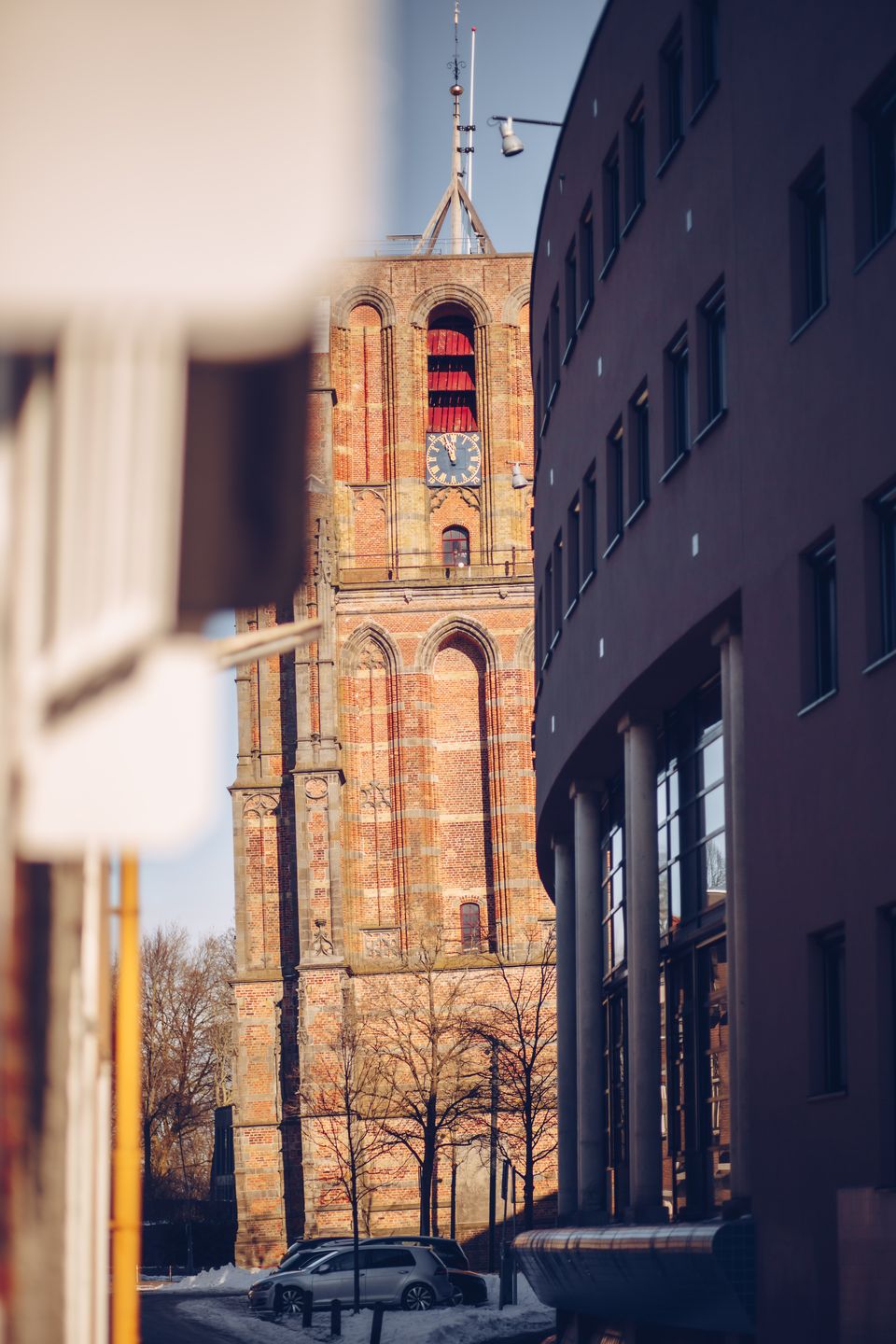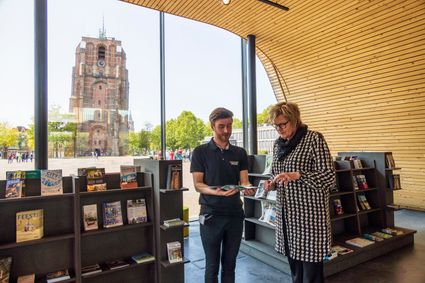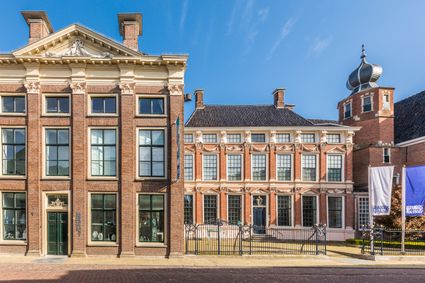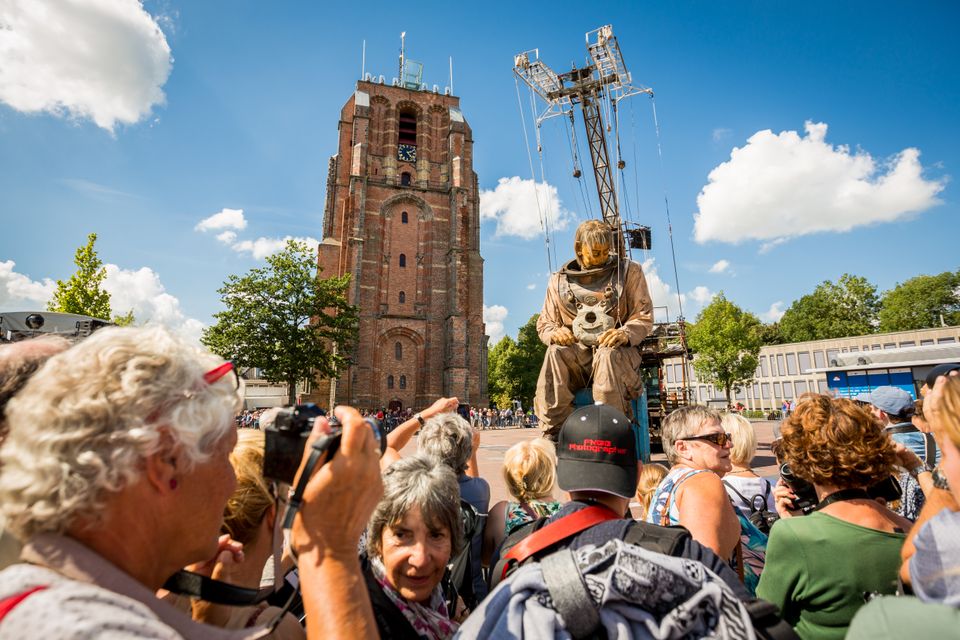The Oldehove

Have you ever walked through the heart of our city? There's a good chance you've come across one of our most iconic landmarks: the Oldehove. The leaning tower stands proudly above the rooftops, easily admired from the square. But why is this tower leaning so much in the first place?
Back in time
The Oldehove owes its name to the small village that once stood on this spot by the Middelzee. Around the year 1000, a small church stood on top of the terp (artificial dwelling mound). The village of Oldehove grew, as did the neighboring terp villages. In 1435, the villages of Oldehove, Nijehove, and Hoek merged to become Leeuwarden, and the city was granted its city rights. The church, known as the Sint Vituskerk, had already been expanded several times. With the arrival of the city, there was also a need for a tall tower—one taller than the Dom Tower in Utrecht and the Martinitoren in Groningen.
Skeef, skever, skeefst
And so, on May 28, 1529, the design of master builder Jacob van Aaken was selected, and construction of the new, imposing church began. The plan was to first build the tower, which would stand next to the existing Sint Vitus Church, followed by a new cathedral that would be connected to the tower. Unfortunately, things didn’t go as planned: the tower began to lean even during construction. They attempted to continue building straight on the slanted foundation—twice, in fact—but without success. The tower leaned even more, now not only slanted but also slightly curved. When the tower reached a height of 30 meters, master builder Jacob van Aaken died from "chagrin," likely depression. The project was then taken over by master builder Cornelis Frederiks, but in 1533 the construction of the tower was abandoned.

Proud Tower
And so, for a time, the tower, the Oldehove, stood next to the increasingly dilapidated Sint Vitus Church. In 1566, the church fell victim to the iconoclastic fury. In 1576, during the Eighty Years' War, the church was damaged in a fierce storm. Due to the ongoing violence of the war, the church could not be repaired, leading to its partial demolition in 1595. Since the nobility had been buried inside the church, and the common folk outside, the church walls were left standing to maintain this distinction. Eventually, in 1706, the church disappeared entirely. Thus, only the proud, leaning tower remained on the square.
Traces of the Past
The Oldehoofsterkerkhof is filled with tile panels, where the history of Leeuwarden is etched in stone. As you walk across the square, you'll encounter, for example, a control card from the Elfstedentocht, as well as an advertisement from the manufacturer Hooghiemstra from 1898, who had started his briquette factory on the Willemskade four years earlier. And did you know that the outlines of the Sint Vitus Church are still visible? Among the tile panels, you'll find 24 gravestones and several rows of hidden fountains. The fountains, which appear every 15 minutes in summer and turn the square's bricks a deep red, mark the place where the old Sint Vitus Church once stood. The gravestones indicate where the new cathedral was meant to be built.

Folk Tales
According to an old folk tale, the mound and tower got their name from an elderly woman. She was sitting peacefully on the beach of the old Middelzee, knitting on the terp. To her surprise, a tower came floating towards her on a piece of land. The woman admired the tower and shouted, "Ho âlde, ho!" (Stop, stay!). She was overjoyed when the tower anchored itself by the terp.
Symbol of Leeuwarden
Leeuwarders have always been known for their skepticism when talking about their city. Folk singer Piter Wilkens captured this in the "Liwwadder Blues," which the reserved people of Leeuwarden love to quote: "Het het nooit wat weest, en et zal nooit wat wurde, als't in Liwwadden geboren bist, kest et wel skudde." Roughly translated, it means that if you were born in Leeuwarden, you might as well forget it, it’s never going to amount to much! However, have you ever heard these same reserved Leeuwarders talk about the Oldehove? With a touch of nostalgia, they say in the city dialect, "A’k de Oldehove niet siën ken, dan foël ik my onwennich," meaning, "If I can’t see the Oldehove, I feel uneasy." Although the people of Leeuwarden may seem not to speak too highly of their city at first, they wouldn't trade it for the world.
There is still so much more to learn about the Oldehove. From the restoration of the tower to the centuries-old discoveries made while excavating the mound, from the ringing bells to the unique clockwork, the Oldehove's tower keepers can tell you all about it.







